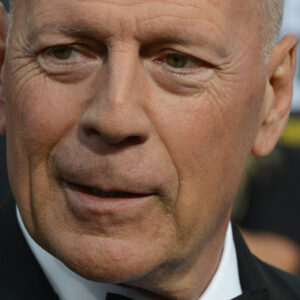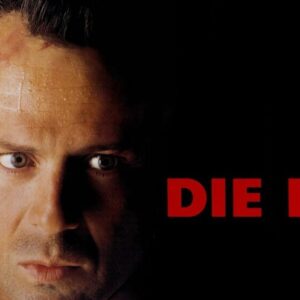Method acting, a technique that emphasizes deep immersion into a character’s emotions and life, has significantly influenced modern acting. It encourages actors to live as their characters would, both on and off the set, to achieve a more authentic portrayal. Originating from Konstantin Stanislavski’s system in Russia, method acting was popularized in the United States by Lee Strasberg, who adapted Stanislavski’s ideas into what is now known as the Method.
Strasberg’s approach involved actors drawing from their own experiences to connect with their characters on a profound emotional level. This technique has shaped many iconic performances in cinema, and its influence can be seen in the works of actors like Marlon Brando and Robert De Niro. While method acting has its proponents, it is also met with criticism for its intense and sometimes isolating demands on actors.
Introduction to Ryan Gosling as a Prominent Actor
Ryan Gosling, known for his versatility and commitment to his roles, is a prominent figure in contemporary cinema. With a career spanning over two decades, Gosling has taken on a diverse array of characters, from the introspective Jacob Palmer in Crazy, Stupid, Love to the brooding Driver in Drive. His ability to transition between genres and embody a wide range of personalities has made him a respected and influential actor.
Gosling’s performances are often marked by a unique approach that sets him apart from many of his peers. While some might categorize him as a method actor, his views on the technique reveal a more nuanced understanding of its application and limitations. Gosling’s perspective on method acting offers valuable insights into the challenges and opportunities that come with this demanding approach to acting.
Definition and Background of Method Acting
Method acting involves a deep, personal connection to the character being portrayed. Actors using this technique strive to experience their character’s emotions and life circumstances as fully as possible. This can mean adopting the character’s way of life, mimicking their behavior, or drawing on personal experiences to evoke genuine responses.
The technique traces its roots to Konstantin Stanislavski, a Russian theater practitioner whose system emphasized the importance of emotional authenticity and psychological realism. Lee Strasberg, a key figure in the development of method acting in the U.S., expanded on Stanislavski’s ideas, focusing on emotional memory and sense memory exercises to help actors achieve a profound connection with their roles.
Ryan Gosling’s Approach to Acting
Ryan Gosling’s career is marked by an impressive range of roles that highlight his ability to adapt to various acting styles. From the intense drama of The Notebook to the subtle, nuanced performance in La La Land, Gosling’s versatility is evident. His approach to acting often involves a combination of preparation, personal interpretation, and a unique style that doesn’t always fit the traditional mold of method acting.
Gosling’s personal acting style includes extensive research and preparation, but he also brings a distinct personal touch to his roles. His performances are characterized by a blend of emotional depth and physicality, allowing him to create compelling and memorable characters without strictly adhering to method acting principles. This approach highlights Gosling’s adaptability and his willingness to explore different techniques to enhance his performances.
Gosling’s Insights on Method Acting
Ryan Gosling has openly discussed his views on method acting in various interviews. He acknowledges the technique’s power but also points out its potential pitfalls. In an interview with The Hollywood Reporter, Gosling remarked, “Method acting can be incredibly powerful, but it’s not always necessary. Sometimes, the best performances come from a different kind of preparation or a different approach to the character.”
Gosling’s perspective reflects a balanced view of method acting. While he recognizes the benefits of immersing oneself deeply into a character, he also emphasizes that method acting is not a one-size-fits-all solution. His experiences on set have demonstrated that there are multiple pathways to creating a compelling performance, and the choice of technique often depends on the role and the actor’s personal process.
Specific examples from Gosling’s career illustrate his approach. In Drive, Gosling’s portrayal of the enigmatic Driver involved a minimalistic approach to dialogue and a focus on physicality and presence. This method, while not strictly method acting, achieved a raw and intense performance that resonated with audiences. Conversely, in The Nice Guys, Gosling’s comedic timing and chemistry with co-star Russell Crowe showcased his ability to adapt his acting style to fit the needs of the script and the character.
Gosling’s Opinions on the Limitations of Method Acting
Ryan Gosling has also expressed concerns about the limitations of method acting. In an interview with GQ, he noted, “Method acting can sometimes become a crutch. It’s important to remember that the technique is just one tool among many. Over-reliance on it can sometimes limit an actor’s range or lead to unnecessary strain.”
Gosling’s critiques highlight the potential drawbacks of method acting. He points out that the technique’s intense focus on personal experience and emotional depth can sometimes overshadow other important aspects of performance, such as timing, interaction with fellow actors, and adaptability. For some roles, a more flexible or alternative approach might yield better results.
Comparison with Other Acting Techniques
Gosling’s approach to acting can be compared with other techniques such as the Meisner Technique and the Chekhov Technique. The Meisner Technique, developed by Sanford Meisner, focuses on improvisation and reacting to the present moment, emphasizing spontaneous emotional responses. The Chekhov Technique, created by Michael Chekhov, centers on the use of imagination and physicality to create characters.
Gosling’s work demonstrates elements of these techniques as well. For example, his improvisational skills and responsiveness in films like The Nice Guys align with Meisner’s principles. His physicality and use of imaginative approaches in films like Lars and the Real Girl reflect aspects of the Chekhov Technique. This blending of techniques allows Gosling to tailor his approach to each role, creating performances that are both versatile and authentic.
Influence on His Career
Gosling’s views on method acting have undoubtedly influenced his career choices and collaborations. His willingness to explore various acting methods and adapt his approach to different roles has led to a diverse filmography and strong partnerships with directors and fellow actors. For instance, his collaboration with director Damien Chazelle in La La Land and First Man showcases how Gosling’s flexibility and openness to different techniques have contributed to the success of these films.
Gosling’s career choices reflect a nuanced understanding of acting techniques, demonstrating his ability to balance preparation with spontaneity. His performances are often characterized by a unique blend of authenticity and creativity, which can be attributed to his diverse approach to acting.
Conclusion
Ryan Gosling’s perspective on method acting provides valuable insights into the complexities of this technique and its role in modern cinema. While he acknowledges the power of method acting, he also emphasizes the importance of adaptability and the exploration of different approaches. Gosling’s contributions to the discussion on acting techniques enrich the broader understanding of performance and highlight the diverse ways in which actors can create compelling characters.
Call to Action
To see Ryan Gosling’s acting approach in action, explore his filmography, including films like Drive, La La Land, and The Nice Guys. His performances offer a glimpse into his unique approach to acting and provide a broader perspective on the application of various techniques. Share your thoughts on method acting and its place in modern cinema, and consider how different techniques might influence your own understanding of performance.





